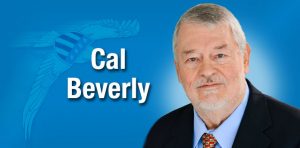“This City is what it is because our citizens are what they are.” — Plato
By 1974, with Bessemer Securities’ (Phipps Land Company) financial participation, there were 4,000 residents, a new Lake Peachtree, Flat Creek Country Club happens, and Aberdeen Village is almost complete.
It was better than the American dream. It was a miracle, at least until 1979. You have heard the old expression that “things are too good to be true,” that was Peachtree City in 1979.
Is the party over?
Gloom is in the air in 1979. The world is spinning out of control.
A failing pressure valve in the unit-2 reactor at the Three Mile Island nuclear facility creates a national panic.
The Soviet Union, our nation’s arch nemesis, invades Afghanistan. Most of eastern Europe is in the clenched fist of the USSR. The threat of nuclear war grows.
Our greatest ally, the United Kingdom, is literally falling apart at the seams as the socialist experiment brings the once-proud world power to its knees. Out of desperation, voters throw all caution to the wind, and Margaret Thatcher is elected as the first female prime minister as most of the labor force is on strike, mountains of garbage lined the streets, and public services fail to function.
Iranians usher in a new era of clashing civilizations, overthrowing the shah while Ayatollah Ruhollah Khomeini returns and 63 Americans are taken hostage in the American Embassy in Tehran.
Due to the crisis in Iran, oil prices increase around the world and the public panic buying makes things worse. The economy remains is in heavy crisis.
So-called “experts” are predicting the world’s end by nuclear fallout, a returning ice age, and war. The media cannot resist promoting their claims.
President Jimmy Carter appears almost helpless on the world stage.
No immunity for Peachtree City
The fledgling Peachtree City, the new oasis 25 miles south of Atlanta, is not immune from the calamity.
Just as city founder Pete Knox, Jr. and his band of investors found that things were not manageable, so too did Phipps Land Company.
The real estate development game is a risky business. The egos and bluster of rolling the dice with other people’s money can sometimes end badly. The real estate marketplace barometer disclosed a serious storm as the market took a downward turn.
The magical financial lifeline extended from Andrew Carnegie’s success and J.P. Morgan’s fortune frays and snaps in two, sucking the city into the world’s hurricane of chaos.
Peachtree City was swallowing up master real estate developers and spitting them out. Big ambitious dreams require even bigger bank accounts. John Train, author of “Preserving Capital and Making it Grow,” said, “Late in 1979, Peachtree City was virtually given away to a creditor.” Phipps Land Company also had to sell Palmetto Dunes Resort on Hilton Head Island and other properties. According to Train, “The result: net losses totaling $20 million.”
“If you can walk away from a landing, it’s a ‘good’ landing. If you [can] use the airplane the next day, it’s an ‘outstanding’ landing.” — Brigadier General Chuck Yeager
Renowned test pilot Gen. Yeager described the situation surrounding Peachtree City perfectly. Phipps Land Company flew the project into a heavy economic storm, and it crashed. Can the new owner get it back up in the air? And who is the new owner of all the real estate, by the way?
Extend the flying and surviving metaphor even further. Things were also just starting to take off with the growing airport 20 miles north.
Back in 1940, thanks to Adolph Hitler, the federal government took over most of Chandler Field airport and doubled its size, creating the Atlanta Army Airfield, servicing combat aircraft there. The larger airport proved it could serve as a major aviation hub and the Army ceased its operations after the war, leaving a magnificent platform for commercial aviation.
Timing is everything
Peachtree City is coming of age right along with the airport, now called the Atlanta Municipal Airport. The “jet age” had begun. Delta is “ready when you are” and they move their headquarters to Atlanta. Eastern is “America’s favorite way to fly,” and Atlanta has become their busiest hub.
Large numbers of aviation jobs are created and places like College Park, Hapeville, and unincorporated Clayton County take a beating due to the noise from the jets and the airport traffic.
More aviation employees mean more families looking for a place to live. It’s a horrible time for Phipps Land Company to crash, and, seriously, the city residents are wondering who owns the land now. Will the newest city in Georgia wind up in bankruptcy as well?
Peachtree City – Act 3, Scene 1
Let’s set the stage for the third act. The audience sees the end of a large rainbow landing on tiny Peachtree City, exposing a municipal pot of gold, glowing and left standing intact after surviving an economic hurricane of world disasters.
Enter stage left: The hero, Equitable.
A large portion of land yet to be developed ends up in the lap of the lender, the Equitable Life Assurance Society of the United States. Once again, failure and chaos end up being a gift from God and the reason the city propels further, even well beyond anything Bessemer Securities (Phipps Land Company) is able to achieve.
Like Gen. Yeager’s test plane, Peachtree City appears somehow ready for takeoff the next day.
Equitable had tens of billions of dollars of assets and insurance in force. In other words, they had “patient money.” To maintain strict planning standards and quality development, Peachtree City needed a patient titleholder. Additionally, fretting over the capital for city infrastructure and the like would no longer be an issue.
In the late 1960s, Equitable invested in Columbia, Maryland, also part of the “new town” planned movement, so they understood the concept. Fortuitously, Equitable began investing heavily in real estate in 1976, so they understood the profit potential of Peachtree City.
They were also familiar with metro Atlanta and had a real estate presence nearby in downtown Atlanta when they built the 32-story Equitable Life Assurance Building on Peachtree Street in 1968.
Equitable created a subsidiary called Peachtree City Development Corporation to oversee future development. The locals simply referred to it as “PCDC.”
Like something from a Dickens novel, PCDC could be the best of friends or the worst of enemies. More on that coming up in The Citizen.
Read the previous history columns in this series with these links:
Part 1 – The founder, the idea, what now?
Part 2 – The land purchase, the hostility, and the first steps.
Part 3 – The crash, the change, and the new direction.
[Brown is a former mayor of Peachtree City and served two terms on the Fayette County Board of Commissioners. You can read all his columns by clicking on his photo below.]











Leave a Comment
You must be logged in to post a comment.